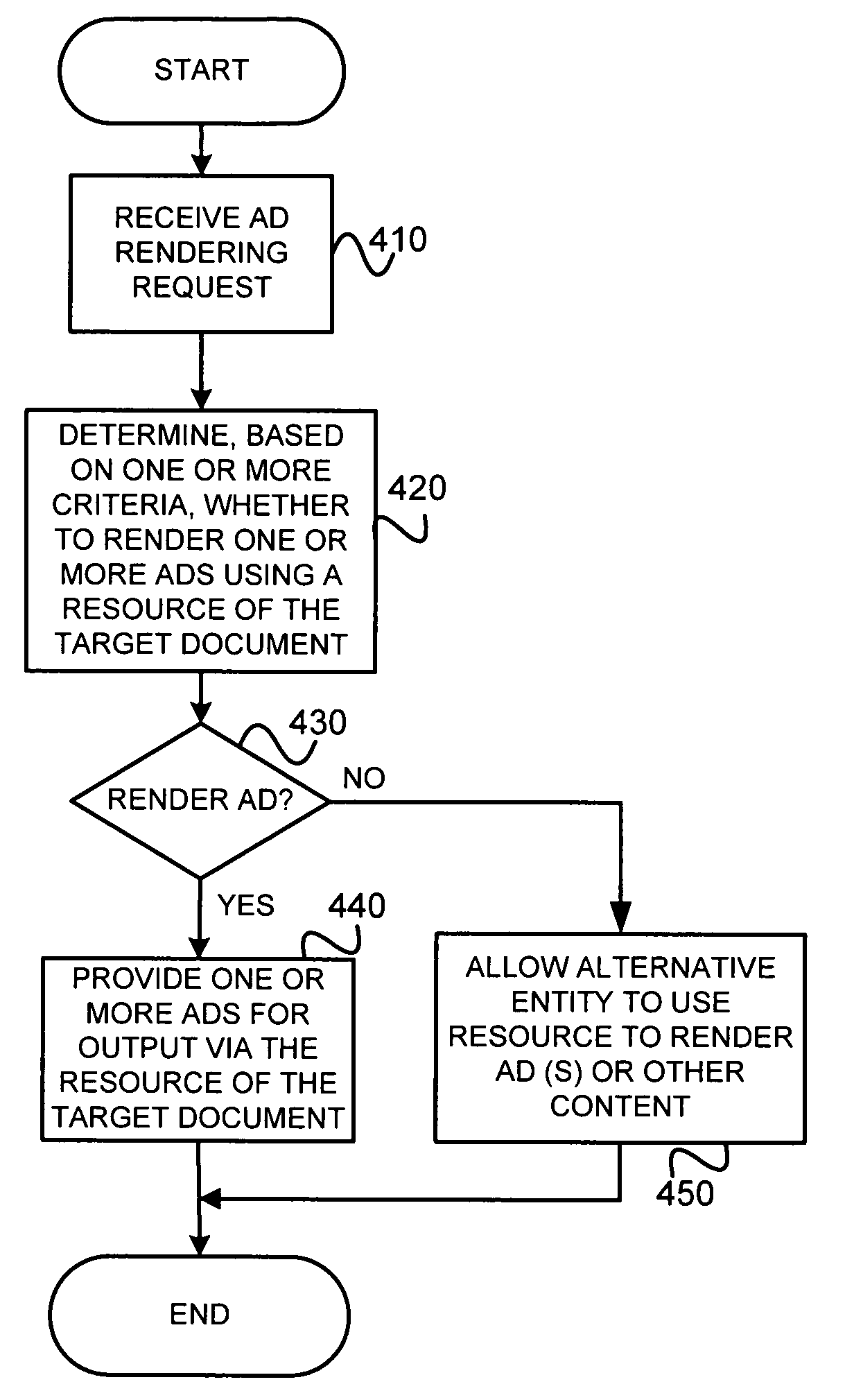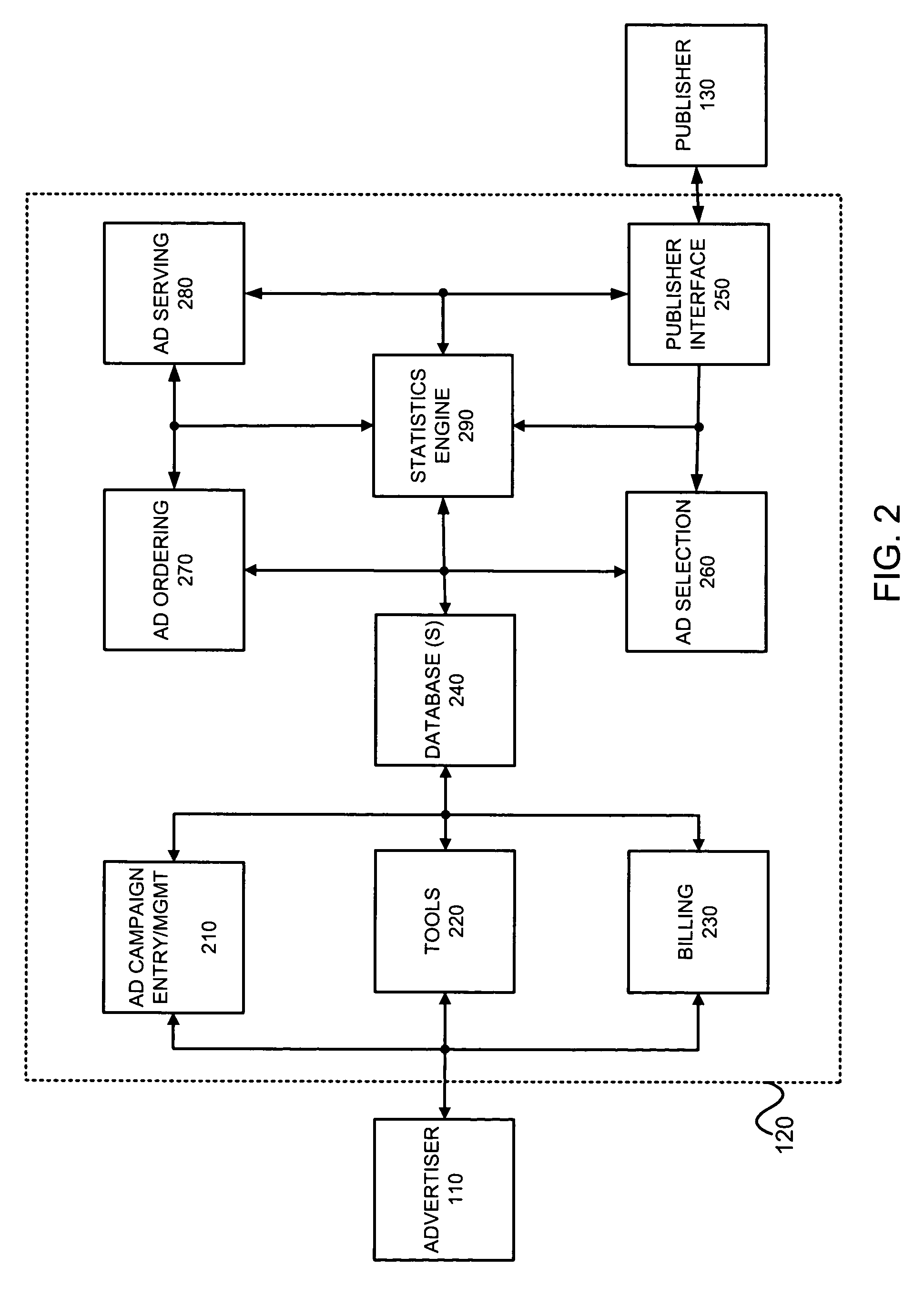Determining content to be provided by an entity for rendering via a resource in a target document or notifying an alternative entity of the availability of the resource
- Summary
- Abstract
- Description
- Claims
- Application Information
AI Technical Summary
Benefits of technology
Problems solved by technology
Method used
Image
Examples
Embodiment Construction
[0018]The present invention provides methods and systems for allowing an ad system to identify situations where it should not provide ads vis-à-vis a resource of a target web document, and in those situations, allow “return” (e.g., refusal, redirect, etc.) of the resource. For example, in one embodiment of the invention, if the content ad system determines it cannot or should not render one or more ads via the resource, the content ad system may redirect an ad request associated with the target document to an alternative entity which may provide ad or other content via the resource. The alternative entity may be predefined by another entity or mechanism, e.g., the publisher of the target document. With respect to providing ads in conjunction with a target document, a “resource” of the target document as used herein broadly refers to one or combination of channels associated with the target document in which advertising may be output to a user, including without limitation a display ...
PUM
 Login to View More
Login to View More Abstract
Description
Claims
Application Information
 Login to View More
Login to View More - R&D
- Intellectual Property
- Life Sciences
- Materials
- Tech Scout
- Unparalleled Data Quality
- Higher Quality Content
- 60% Fewer Hallucinations
Browse by: Latest US Patents, China's latest patents, Technical Efficacy Thesaurus, Application Domain, Technology Topic, Popular Technical Reports.
© 2025 PatSnap. All rights reserved.Legal|Privacy policy|Modern Slavery Act Transparency Statement|Sitemap|About US| Contact US: help@patsnap.com



